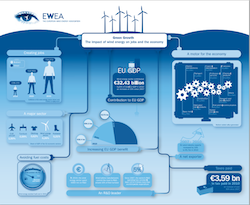 The second book in my 2012 La Nina Reading List was “Roosters of The Apocalypse,” by Rael Jean Isaac. This book could be a dictionary definition of “opposite” as compared to Climate Wars. Where Climate Wars is on the far right side of hysteria of the evils of climate change, Roosters of The Apocalypse is on the far left side of hysteria that it is a major, orchestrated hoax upon the world that is costing us billions upon billions of dollars.
The second book in my 2012 La Nina Reading List was “Roosters of The Apocalypse,” by Rael Jean Isaac. This book could be a dictionary definition of “opposite” as compared to Climate Wars. Where Climate Wars is on the far right side of hysteria of the evils of climate change, Roosters of The Apocalypse is on the far left side of hysteria that it is a major, orchestrated hoax upon the world that is costing us billions upon billions of dollars.
So what is a rooster anyway? Isaac quotes Richard Landes who describes “those who initiate and build support for these movements as roosters (aka Al Gore) for they crow an exciting new message, and their opponents as owls, gloomsters counseling caution and skepticism (Real Issac).” Issac weaves the message of the Xhosa throughout the book, a parable about an orphan girl’s vision of truth. I can’t tell you her truth because I was unable to follow the thread. Rather than explain it in one section, she drops little nuggets of the story throughout the book and not in a clear, concise way. I could have looked up the story on Google, but quite frankly, I’m far to lazy to go to the trouble.
Anyway, the key to building momentum is getting “elites” to join the cause. Al Gore, or U.S. Senator Majority Leader Harry Reid would be considered rooster elites. Once that happens, ordinary people will join in. Isaac tells the story of how the prophecy of global climate change caught fire and spread around the world in breathtaking speed. While doing this, she deconstructs all the “deceptive techniques” and fakery” used by organizations such as the Intergovernmental Panel on Climate Change (IPCC). I won’t rehash the scandal involved in their report but the bottom line was accusers claim they fudged the numbers to support climate change.
It is no doubt that those on the “right side of green” will make millions on global climate change. Read More



 A new poll showing strong support for renewable fuels validates some of the most important ethanol industry legislative priorities – including maintaining the Renewable Fuel Standard (RFS), commercializing E15, providing incentives for the development of cellulosic ethanol, limiting tax incentives for the oil industry, and requiring automobile manufacturers to build cars that will run on fuel sources other than oil.
A new poll showing strong support for renewable fuels validates some of the most important ethanol industry legislative priorities – including maintaining the Renewable Fuel Standard (RFS), commercializing E15, providing incentives for the development of cellulosic ethanol, limiting tax incentives for the oil industry, and requiring automobile manufacturers to build cars that will run on fuel sources other than oil. “Poll after poll consistently demonstrates that Americans of all stripes believe we must be pursuing the production and use of renewable fuels to reduce our dependence on imported oil,” said RFA President and CEO Bob Dinneen. “The RFS is a critical component to the continued growth and innovation of this industry. The RFS ensures that ample supplies of renewable fuels like ethanol are available today and that new and promising renewable fuel technologies will have a market in the future. The RFS has proven effective in addressing America’s goals by helping reduce volumes of imported oil, create jobs, and lower greenhouse gas emissions from transportation fuel.”
“Poll after poll consistently demonstrates that Americans of all stripes believe we must be pursuing the production and use of renewable fuels to reduce our dependence on imported oil,” said RFA President and CEO Bob Dinneen. “The RFS is a critical component to the continued growth and innovation of this industry. The RFS ensures that ample supplies of renewable fuels like ethanol are available today and that new and promising renewable fuel technologies will have a market in the future. The RFS has proven effective in addressing America’s goals by helping reduce volumes of imported oil, create jobs, and lower greenhouse gas emissions from transportation fuel.”
 With the 2012 crop year now underway, we’re introducing the
With the 2012 crop year now underway, we’re introducing the 

 According to the
According to the 
 The terminal just east of Ft. Dodge was purchased by GROWMARK in the fall of 2010. “We’re upgrading that, adding biofuels to it and upgrading the facility in general,” Durdle said. GROWMARK’s interest in biofuels extends to part ownership of Mid America Biofuels, a 30 million gallon biodiesel plant in Mexico, Missouri. “It is definitely a mainstream part of our business,” he added.
The terminal just east of Ft. Dodge was purchased by GROWMARK in the fall of 2010. “We’re upgrading that, adding biofuels to it and upgrading the facility in general,” Durdle said. GROWMARK’s interest in biofuels extends to part ownership of Mid America Biofuels, a 30 million gallon biodiesel plant in Mexico, Missouri. “It is definitely a mainstream part of our business,” he added.